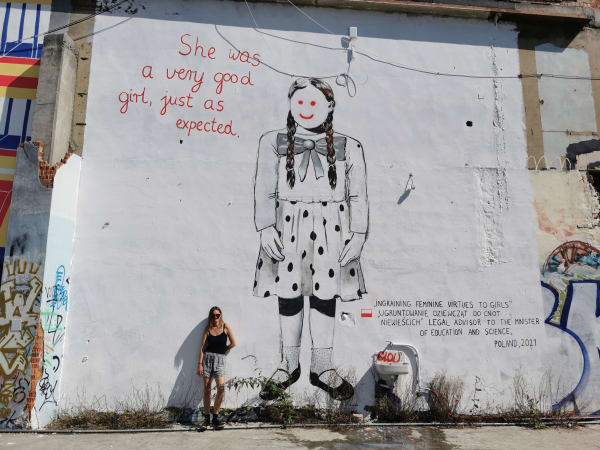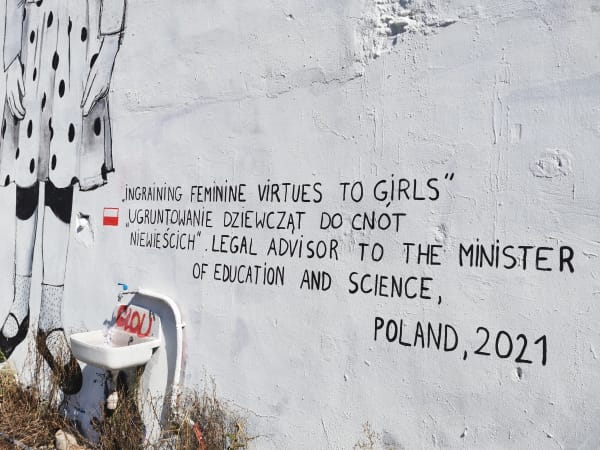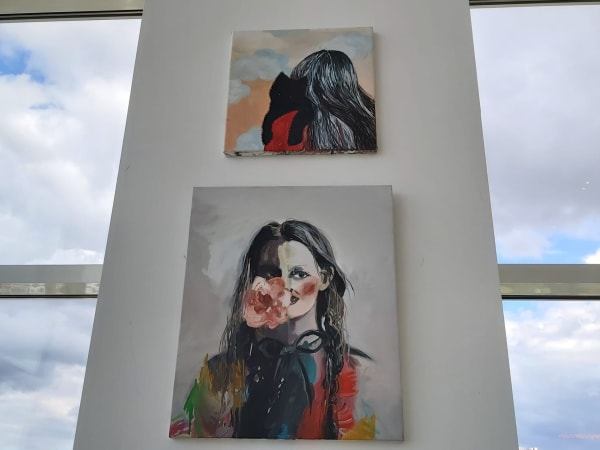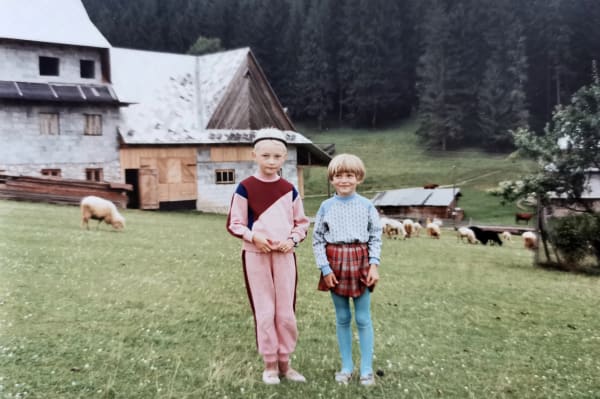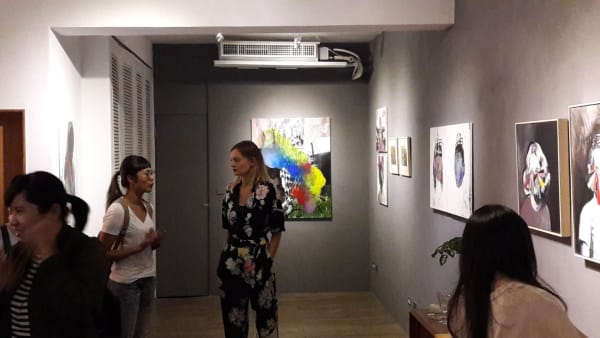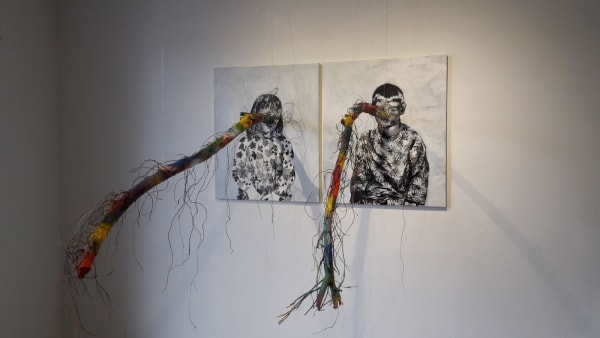'What was less visible I made it more.' – Hanna Ilczyszyn
Art is an expression of what it means to be human, it allows us to communicate from afar, and allows us to come together collectively. From 2020 to present, we are still dealing with a global pandemic. From another perspective, the restrictions on freedom may be a re-evolution of art. While we wait for that to emerge, we asked several artists to open up about their challenge in this new normal of life during these strange days.
Q. Hi Hanna, how do you start most mornings, when you’re at home?
H. Hi, thank you for inviting me to the interview :)
I like to wake up early. I enjoy mornings a lot. They are new beginnings to me and I feel a lot can happen. I especially like Monday mornings. I start my day with a warm cup of tea. I sit with my cup and I enjoy the quietness of the morning. Afterwards I exercise and eat my breakfast. Then I’m ready to go to my studio. My mornings are often long. I’m very grateful that because of being a freelancer I can afford to take my time in the morning.
Q. How are you experiencing the COVID-19 pandemic, especially in Brussels/Poland?
H. At the moment everything is open in Belgium and in Poland. It almost feels that nothing is happening. But the last 1.5 year have been both difficult and hopeful. At the very beginning of the pandemic I felt a lot of quietness and relief which was a good thing. Suddenly there was nothing you could do in the city, no meetings, no trips. I focused on my work and home. But I quickly realised that this situation will not change fast and it made me feel uncomfortable. I worried a lot about my parents. They live in Poland, so we couldn’t see each other. I live in Brussels in a small flat. I didn’t have any garden or balcony. I was going for walks everyday in order to stay sane.
I worked a lot and I think that the fact I could go to my studio helped me a lot. Last Summer I spent in my parent’s house in Poland. It has a big garden with a forest around, very isolated.
Since I moved to Belgium 11 years ago, it was the first time I’ve spent 2.5 months in Poland in Polanica Zdroj. I enjoyed it a lot. I decided to do the same this year. I’m writing to you now, from Polanica. I see green and I hear birds around me. I do think that the pandemic experience differs a lot if you live in a city or a village. For me it’s a moment to be in nature rather than in a city.
Q. Who and what comforted you?
H. It was great to observe my cat Cicia :)
She was unaware of what was happening in the world so her life didn’t change at all. Which made me think that the perception of the pandemia is very relative. I also walked a lot. It was an early Spring in Brussels when we experienced a lockdown. Observing nature growing and changing was very comforting.
Q. How has the pandemic affected your relationship?
H. Throughout the pandemic the world slowed down. I felt it too. I think it taught us to be humble and that nothing can last forever. That’s how I felt it. It helped me to appreciate small things, slow down and focus on now, instead of planning for something next. Also, my plant collection grew at home.
Q. Did your recent works reflect these changes?
H. They did! I started to observe more of what’s around me. I did a series of paintings titled “At home”. I painted my cat Cicia, my plants. During my walks I take a lot of photos. I use them later as my inspiration. I also painted and drew landscapes I saw. Now, in Poland I’m very much inspired by nature, the garden I see every day, green colours, trees.
Q. Lockdown may have perhaps increased the amount of time you have in the studio. Has it been a good time, in some ways?
H. I do spend a lot of time in my studio painting or at home drawing despite the pandemic. But indeed during that time I felt more space in my head, less distractions. My studio was quieter, with less people around. I could definitely work better and more efficiently
Q. Have the fundamental qualities of our visually lived life–light, colour, shade–come more to the fore?
H. The slowing-down of our lives did affect me, in a good way. I pay attention, more and more, to lights and shadows. I like the evening light, and the last sun rays during the longest Summer days in Poland. I noticed I use more green and I experiment more with colours than in the past.
Q. How did you transform the natural colours into the colours that appear in your paintings?
H. When you look at something, let’s say a plant, you probably see green leafs , green stalks. But if you look closer and longer, you will start noticing other colors, shadows, lights, discolorations, young and old leafs with different greens, maybe some patterns on them. I often switch it. What was less visible I made it more. I paint intuitively so this process happens fast. But I do observe things around me for a long time before painting them.
Q. So your art is directly connected to the world around you.
H. Yes it is. I paint what I see around me. I often put different images together in one work. I’m interested in both the visual side of a painting and an atmosphere or a feeling you will have while watching it. That’s why intuition plays a big part in my working process. This is probably why my paintings can be described as “dreamy” and have a surreal feeling. I like this moment between dreams and reality. I also use old photos and my memories as a child in my work.
Q. Was there a certain moment in your life where things seemed to diverge from reality?
H. My parents have a garden and part of it is a forest. Last year, in the evening, we went inside to check for fireflies. As we were entering the forest we noticed there were a lot of them. Those little lights were flying all around us. It was dark and you couldn’t see anything else but them. I felt I was in one of Miyazaki’s fairy tales.
Q. Do you think all good art should invite us to view the world differently?
H. I think so. I think any type of art will make us look at the world differently. Good pieces, or rather works that speak to us will stay in our heads and therefore add something to our lives.
Q. Finally, what’s your favourite memory from childhood?
H. When I was 3 years old I went to the seaside for the first time. I saw the beach, I layed down and started to move my legs and arms on the sand. I was so happy and amazed that such a huge sandpit existed. It was An infinite playground :) I couldn’t believe that something like this could exist. I like this memory because it shows pure happiness of a child of something you discover for the first time.
